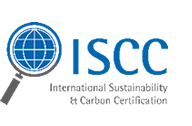
ISCC is a leading global certification system covering the entire supply chain and all types of raw materials and renewable sources. Certification ensures compliance with high ecological and social sustainability requirements, traceability and greenhouse gas emissions throughout the supply chain. ISCC can be applied in a number of markets, including the bioenergy sector, the food market, animal feed and the chemical market. Since its inception in 2010, more than 12,500 certificates in over 100 countries have been issued.
What is covered by the ISCC
ISCC is globally applicable for all types of agricultural crops, their derivatives and renewables. All elements along the supply chain, from agriculture or the point of origin to the end product user, are covered. ISCC guarantees that:
High traceability requirements ensure that biomass can be traced throughout the supply chain. In addition, the ISCC provides methodologies for calculating mass balances and verifying greenhouse gas emissions along the supply chain.
What are ISCC principles
Why ISCC?
ISCC offers a unique solution for all crops and markets. It allows system users to access different market segments with a single certificate. ISCC is officially recognized by the European Commission under the European Renewable Energy Directive (RED). In addition, the ISCC complies with the Unilever Sustainable Agriculture Code, the SAI Sustainability Assessment (silver or gold level) and FEFAC requirements for soy sourcing guidelines. ISCC has also been selected as a system of choice for a variety of initiatives from different market segments (eg Aireg for jet fuels, INRO for biobased materials and FONAP for palm based products).
Who rules the ISCC?
ISCC is a multi-stakeholder initiative governed by an association with currently over 80 members. ISCC was developed through an open multi-stakeholder process involving around 250 international associations, corporations, research institutions and NGOs from Europe, the Americas and Southeast Asia to ensure high practicality and cost effectiveness.
Step by step
Step by Step Producer Group
Guidelines met
Segments Served
Additional Information